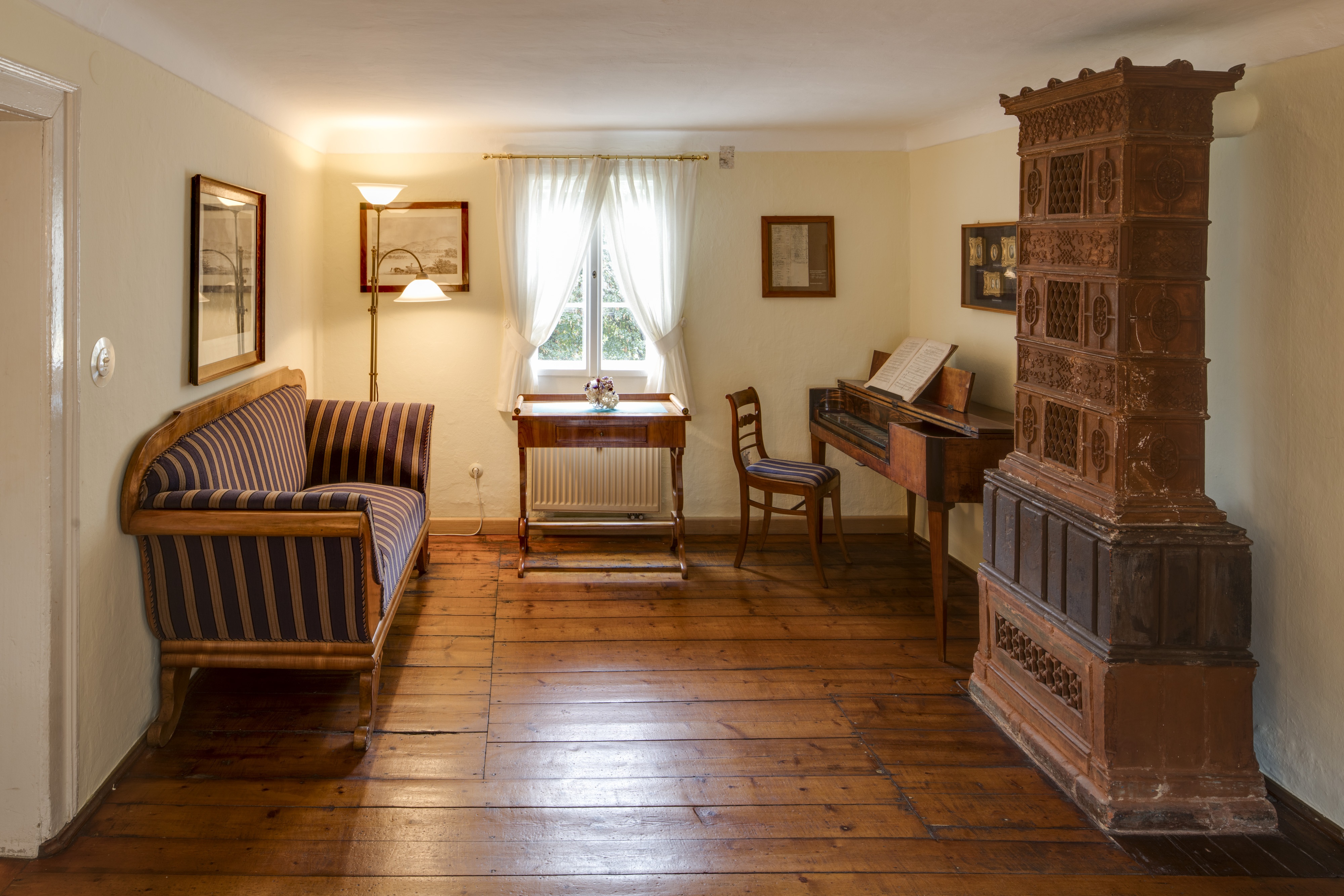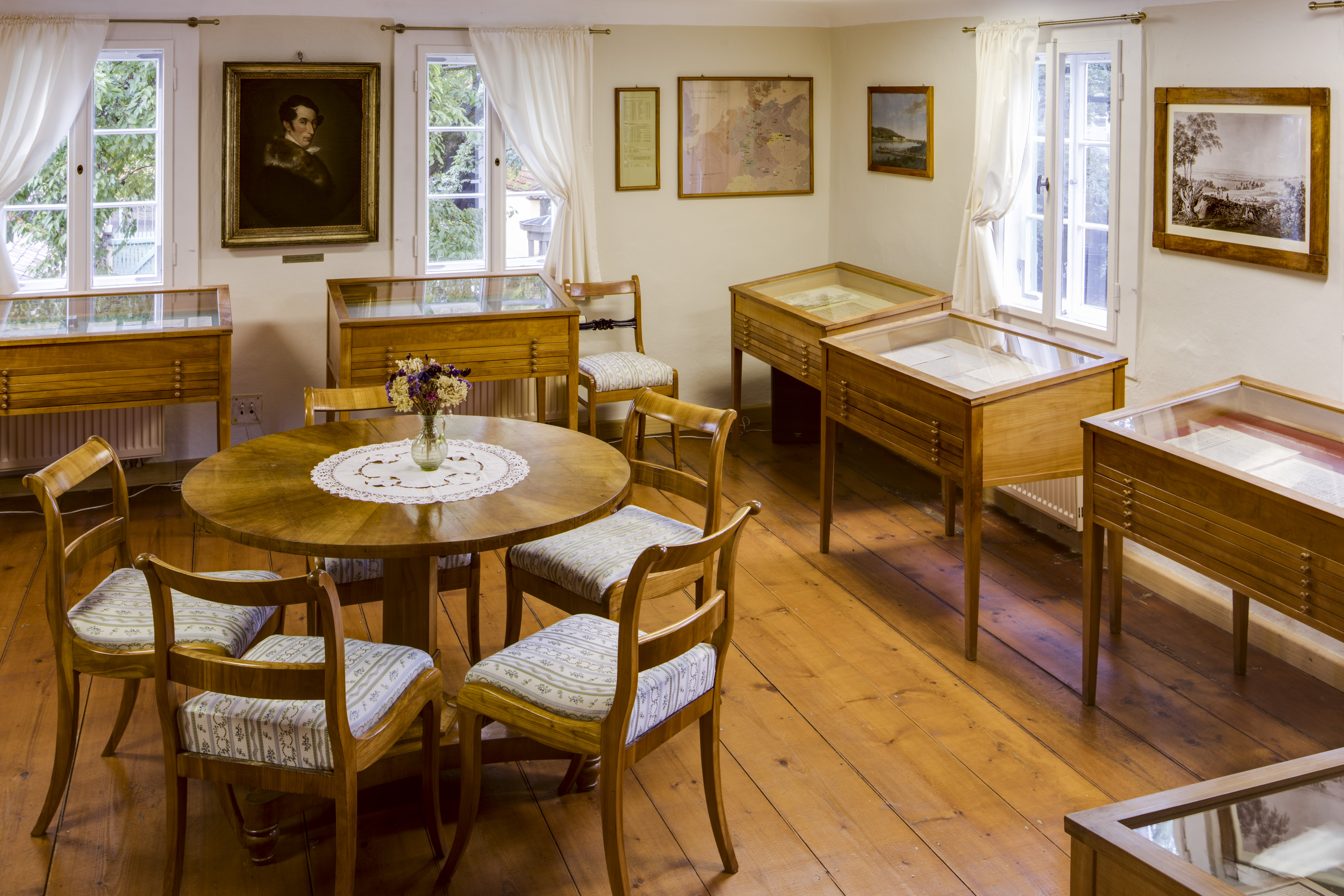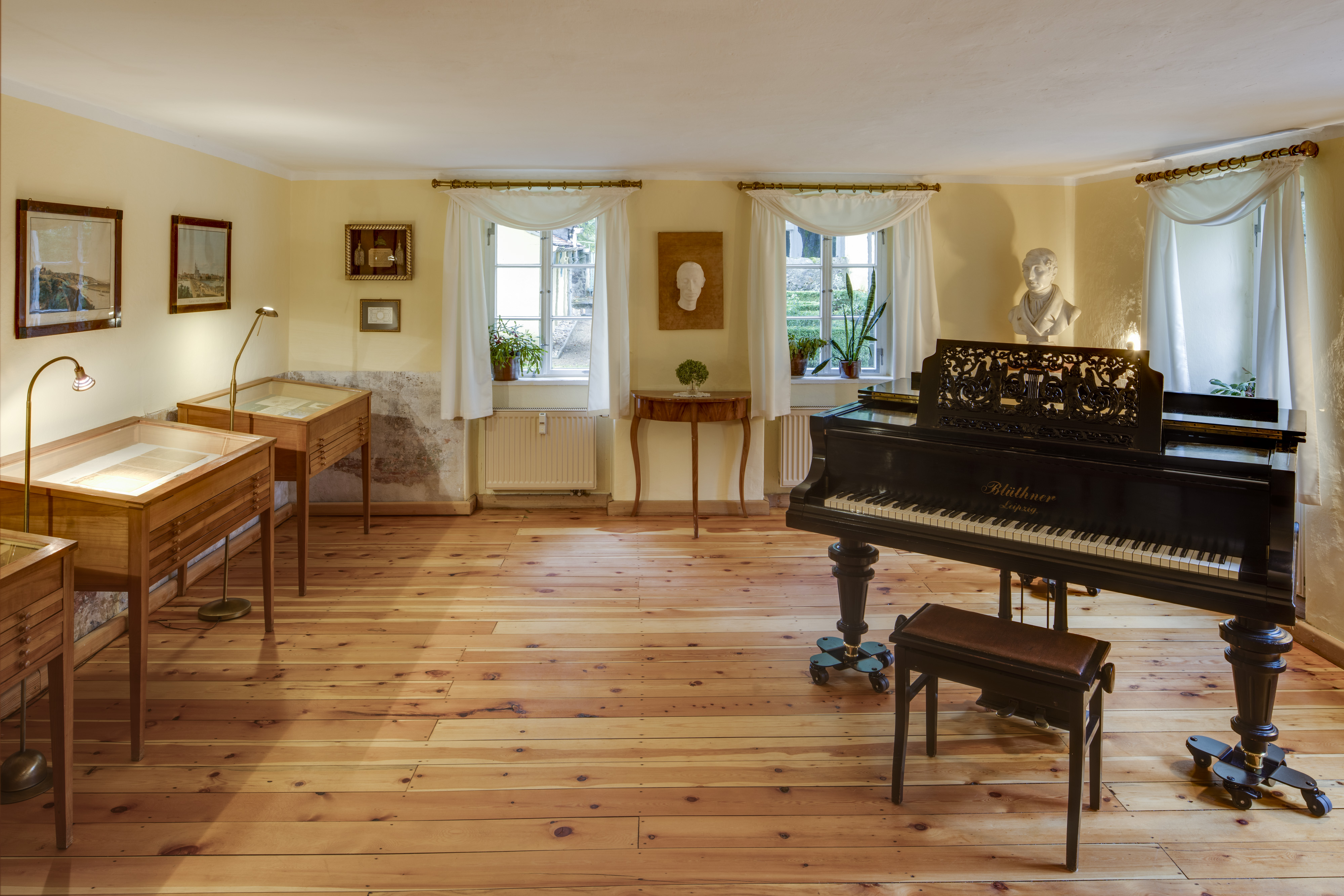
History of the house
»Oh Hosterwitz, oh peace, wrote Carl Maria von Weber (1786 – 1826) in his diary in May 1823. The Dresden court music director and his family spent the summer months of 1818/19 and 1822 to 1824 in the winegrower's house near the city of Dresden. From here, he went on hikes to the nearby Keppgrund and the Elbe Sandstone Mountains. He loved this landscape and felt inspired by it; here he found peace and leisure to compose.

Compositions such as his operas »Euryanthe« and »Abu Hassan«, many songs and chamber music were written in this winegrower's house, which was built around 1664. His famous opera »Der Freischütz« may have been inspired by walks in the Keppgrund or excursions to Saxon Switzerland. In this summer idyll, Weber welcomed personalities such as Friedrich Kind, Johann Nepomuk Hummel, Heinrich Marschner, Wilhelm Müller, Ludwig Tieck and the singer Wilhelmine Schröder-Devrient.

The Carl Maria von Weber Museum
The composer's memory was honoured here as early as the mid-19th century, but it was not until 1948 that the first exhibition was held on the ground floor. The memorial was officially opened in 1957 following the death of Weber's great-granddaughter Mathilde von Weber (1881 – 1956), who donated her estate.
Since 2005, the Carl Maria von Weber Museum has been part of the museums of the city of Dresden. In the original rooms, furniture, works of art and contemporary artefacts commemorate the composer and his environment and make a visit a special experience. The flair of the authentic location can be experienced at concerts, lectures, musical and literary events and garden concerts.
























